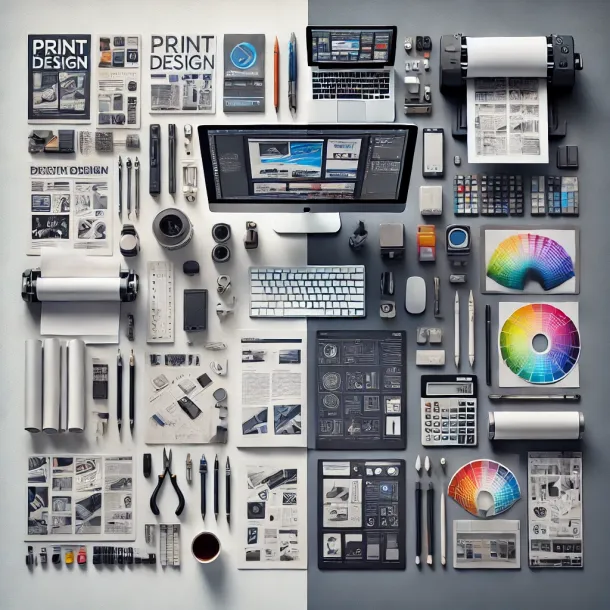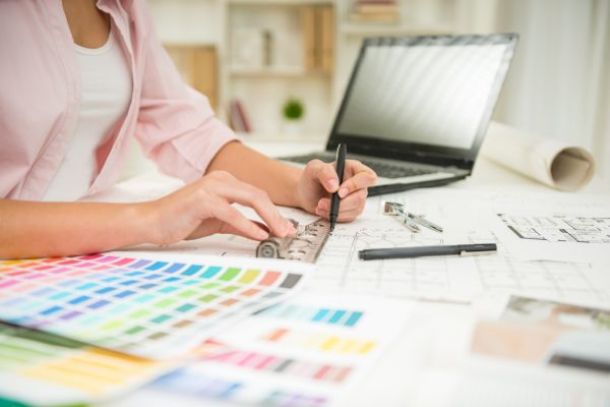The Rise of 3D Design in Graphic and Product Design
The Rise of 3D Design in Graphic and Product Design
The world of design is constantly evolving, with new technologies and techniques continuously reshaping the landscape. Among the most transformative trends in recent years is the rise of 3D design, which has revolutionized both graphic and product design. From creating hyper-realistic visuals to prototyping innovative products, 3D design has become an indispensable tool for designers across various industries. In this article, we will explore the reasons behind the growing popularity of 3D design, its impact on graphic and product design, and how designers are leveraging this technology to push the boundaries of creativity.
The Evolution of 3D Design
3D design has come a long way since its inception. Initially used primarily in industries such as film, gaming, and architecture, 3D design has gradually permeated other fields, including graphic and product design. The advancement of software tools, increased accessibility of powerful hardware, and growing demand for more immersive and interactive experiences have all contributed to the widespread adoption of 3D design.
In the past, 3D design was seen as a niche skill, requiring specialized knowledge and expensive equipment. However, with the development of user-friendly software like Blender, Cinema 4D, and Autodesk Fusion 360, designers of all skill levels can now create 3D models and renderings with relative ease. Additionally, the integration of 3D capabilities into popular design tools like Adobe Photoshop and Illustrator has made it even more accessible to traditional graphic designers.
Why 3D Design is Gaining Popularity
Several factors have contributed to the rise of 3D design in both graphic and product design. One of the most significant is the demand for more realistic and engaging visuals. In an increasingly digital world, consumers expect high-quality, lifelike images that capture their attention and convey information quickly. 3D design allows designers to create visuals that are not only visually stunning but also highly detailed and accurate.
Another driving force behind the popularity of 3D design is the growing need for customization and personalization. In product design, for example, 3D modeling enables designers to create unique, tailored products that meet specific customer needs. This level of customization was previously difficult to achieve with traditional 2D design methods. Similarly, in graphic design, 3D elements can be customized and manipulated in ways that 2D graphics cannot, allowing for more creative and dynamic compositions.
The rise of e-commerce and digital marketing has also played a significant role in the adoption of 3D design. Online retailers and brands are increasingly using 3D models and animations to showcase their products in a more interactive and immersive way. This not only enhances the user experience but also helps consumers make more informed purchasing decisions. For example, 3D product configurators allow customers to see and customize products from every angle before making a purchase, leading to higher conversion rates and customer satisfaction.
The Impact of 3D Design on Graphic Design
In the realm of graphic design, 3D design has opened up new possibilities for visual storytelling and creative expression. Traditionally, graphic design has been limited to 2D formats, such as print and digital media. However, with the advent of 3D design, designers can now create visuals that have depth, dimension, and realism.
One of the most noticeable impacts of 3D design on graphic design is the ability to create hyper-realistic visuals. By incorporating 3D elements into their designs, graphic designers can create images that look and feel more lifelike. This is particularly useful in advertising, where realistic visuals can help convey a product’s features and benefits more effectively. For example, a 3D rendering of a product can show it from multiple angles, highlight its texture and material, and even simulate how it interacts with light and shadows.
3D design has also enabled the creation of more immersive and interactive experiences in digital media. For instance, web designers are increasingly using 3D elements to create engaging and interactive websites. These elements can be used to guide users through a narrative, highlight key information, or simply add a touch of creativity to the overall design. Additionally, 3D animations and motion graphics have become popular tools for creating dynamic content that captures attention and enhances the user experience.
Another significant impact of 3D design on graphic design is its role in branding and identity. Brands are constantly looking for ways to stand out in a crowded marketplace, and 3D design offers a unique opportunity to create memorable and distinctive brand identities. For example, 3D logos and typography can add depth and dimension to a brand’s visual identity, making it more recognizable and impactful. Furthermore, 3D design allows for the creation of branded environments, such as virtual showrooms or interactive displays, that enhance the brand experience and engage customers on a deeper level.
The Role of 3D Design in Product Design
While 3D design has had a profound impact on graphic design, its influence on product design is arguably even more significant. In product design, 3D modeling and rendering are essential tools for visualizing concepts, prototyping, and testing new products before they go into production.
One of the key advantages of 3D design in product development is the ability to create accurate and detailed prototypes quickly and cost-effectively. In the past, creating physical prototypes was a time-consuming and expensive process, often requiring multiple iterations before the final product was approved. With 3D modeling, designers can create virtual prototypes that can be easily modified and tested, reducing the need for physical prototypes and speeding up the development process.
3D design also allows for more effective communication and collaboration between designers, engineers, and manufacturers. By creating detailed 3D models, designers can provide clear and precise specifications for how a product should be built. This not only reduces the likelihood of errors during production but also ensures that the final product meets the designer’s vision.
In addition to its role in prototyping, 3D design has also revolutionized the way products are presented and marketed. As mentioned earlier, 3D product configurators allow consumers to interact with and customize products online, providing a more personalized shopping experience. Moreover, 3D renderings and animations can be used in marketing materials to showcase a product’s features and benefits in a more engaging and informative way.
The rise of additive manufacturing, or 3D printing, has further amplified the importance of 3D design in product development. 3D printing enables designers to create complex and intricate products that would be difficult or impossible to produce using traditional manufacturing methods. This has opened up new possibilities for innovation and creativity in product design, allowing designers to explore new forms, materials, and functions.
The Future of 3D Design in Graphic and Product Design
As technology continues to advance, the role of 3D design in both graphic and product design is likely to expand even further. One area where 3D design is expected to have a significant impact is in augmented reality (AR) and virtual reality (VR). These technologies rely heavily on 3D design to create immersive and interactive experiences that blur the line between the physical and digital worlds.
In graphic design, AR and VR offer new opportunities for creating engaging and interactive content. For example, AR can be used to create interactive print materials, where users can scan a page with their smartphone to unlock additional content, such as 3D animations or product demonstrations. VR, on the other hand, allows for the creation of fully immersive environments, where users can explore and interact with 3D designs in a virtual space.
In product design, AR and VR can be used for everything from virtual prototyping to customer experiences. For instance, designers can use AR to overlay 3D models onto real-world objects, allowing them to see how a product would look and function in its intended environment. Similarly, VR can be used to create virtual showrooms, where customers can explore and interact with products in a simulated environment before making a purchase.
Another area where 3D design is expected to grow is in the field of generative design. Generative design is a process where designers use algorithms and artificial intelligence (AI) to generate multiple design options based on specific parameters and constraints. This approach allows designers to explore a wider range of possibilities and create more innovative and optimized designs. As AI and machine learning technologies continue to evolve, generative design is likely to become an increasingly important tool in both graphic and product design.
Conclusion: Embracing the Power of 3D Design
The rise of 3D design in graphic and product design has opened up new possibilities for creativity, innovation, and efficiency. By embracing 3D design, designers can create more realistic, engaging, and customized experiences that resonate with their audiences. Whether it’s creating hyper-realistic visuals for advertising, developing detailed prototypes for new products, or exploring new frontiers in AR and VR, 3D design offers endless opportunities for pushing the boundaries of what’s possible in design.
As the technology continues to evolve, the importance of 3D design in both graphic and product design will only continue to grow. Designers who stay ahead of the curve and embrace these new tools and techniques will be well-positioned to create the next generation of innovative and impactful designs. Whether you’re a graphic designer looking to add depth and dimension to your work, or a product designer aiming to streamline the development process, 3D design is a powerful tool that can help you achieve your creative goals.


